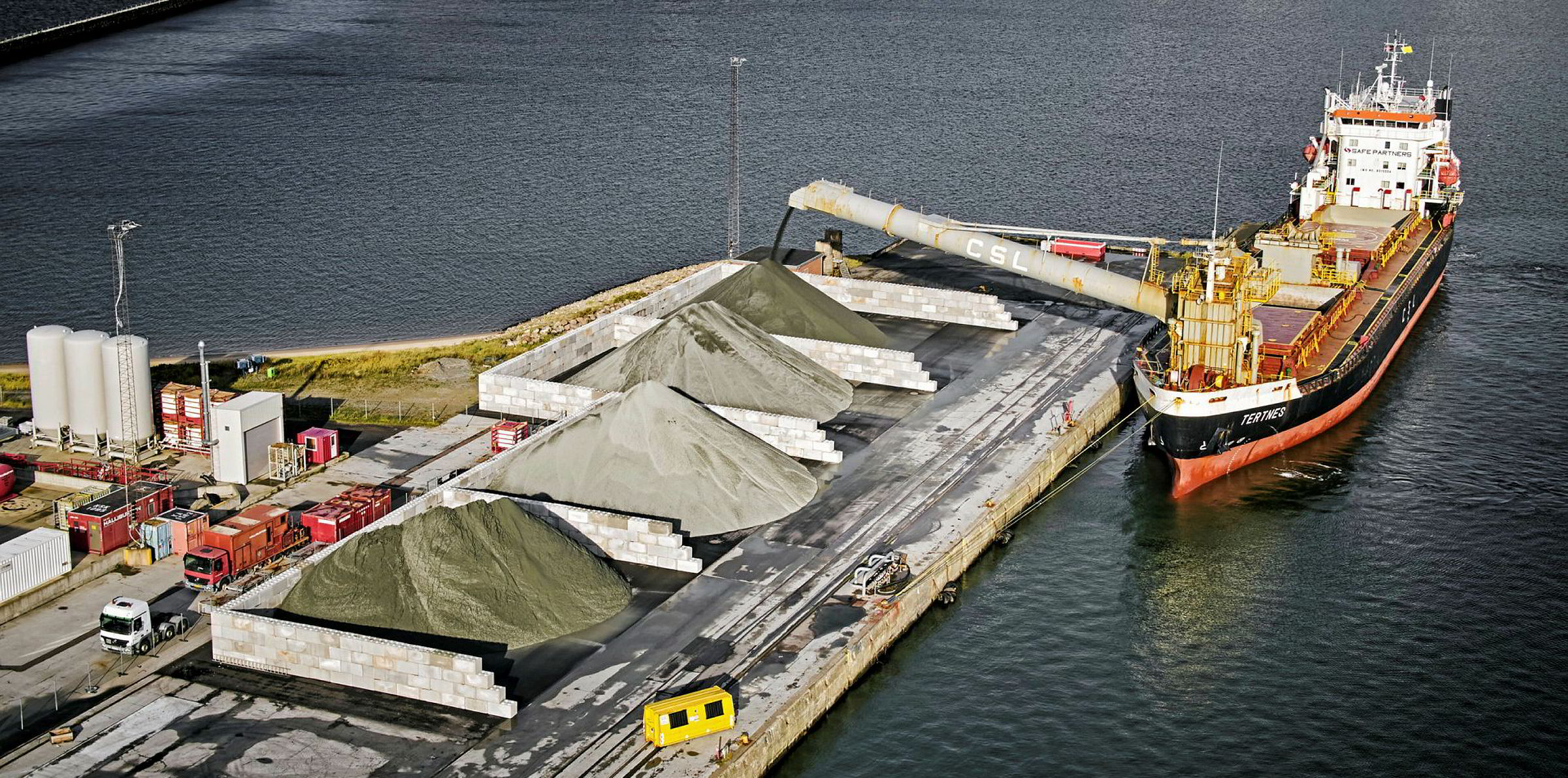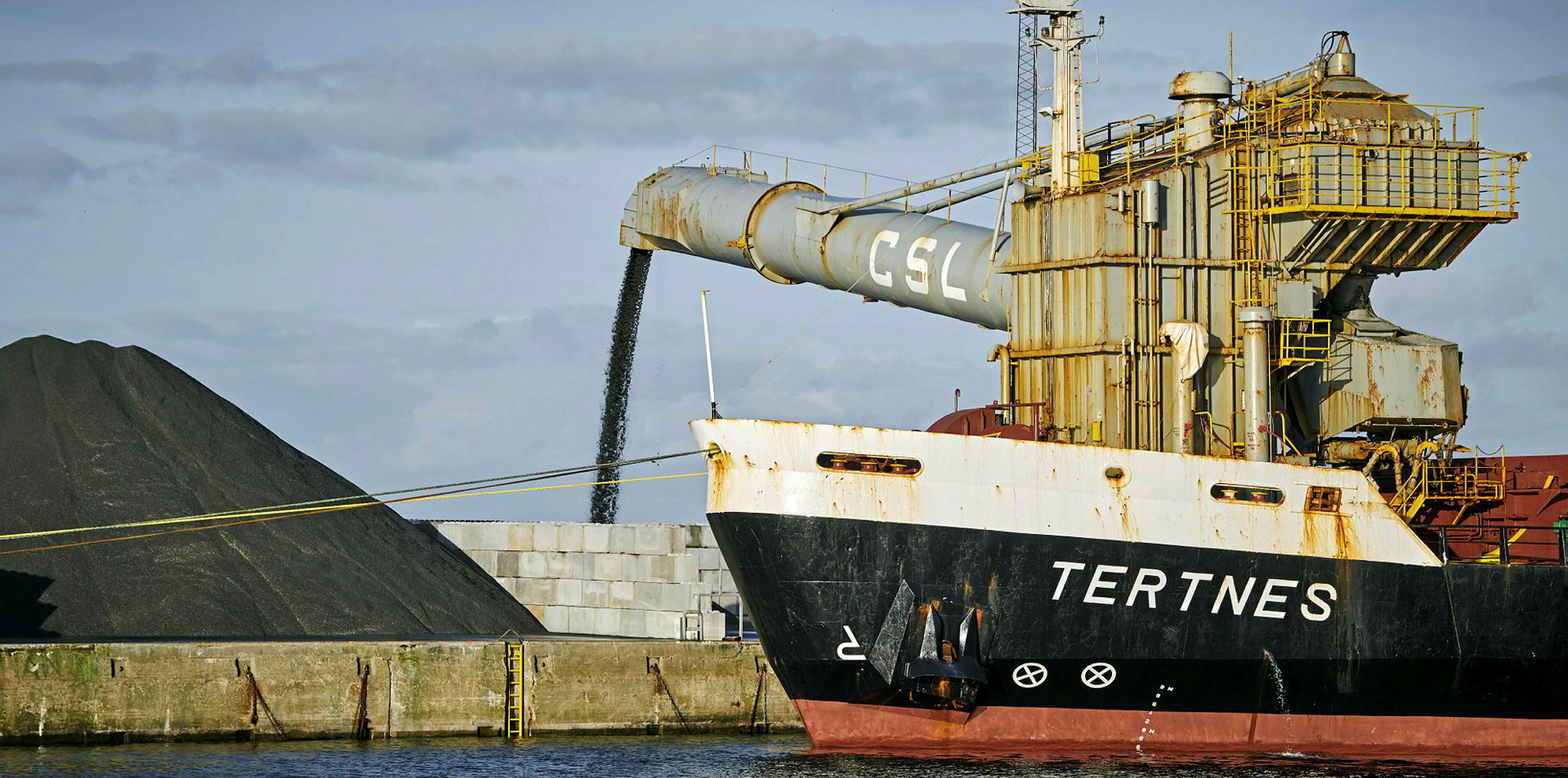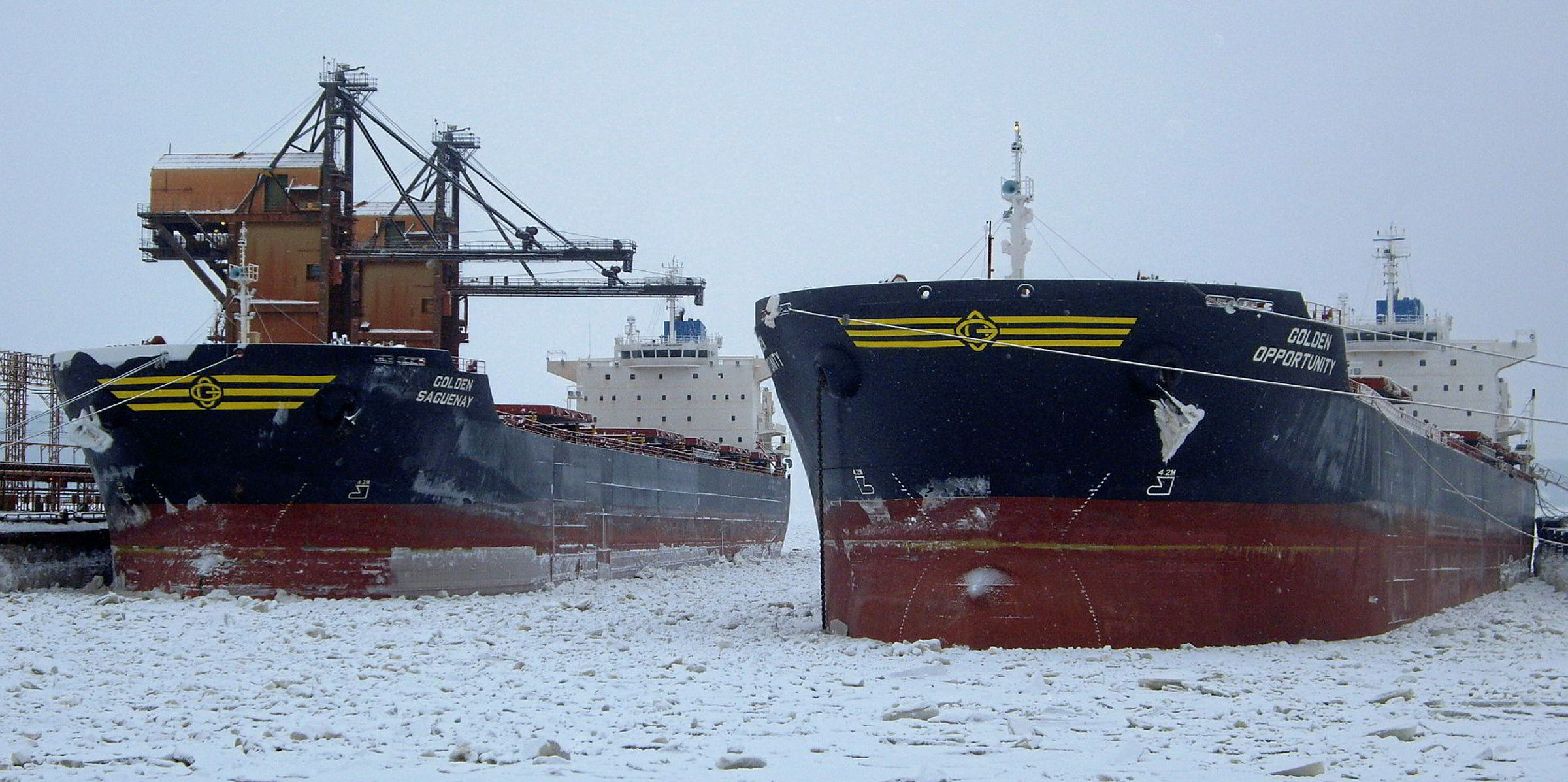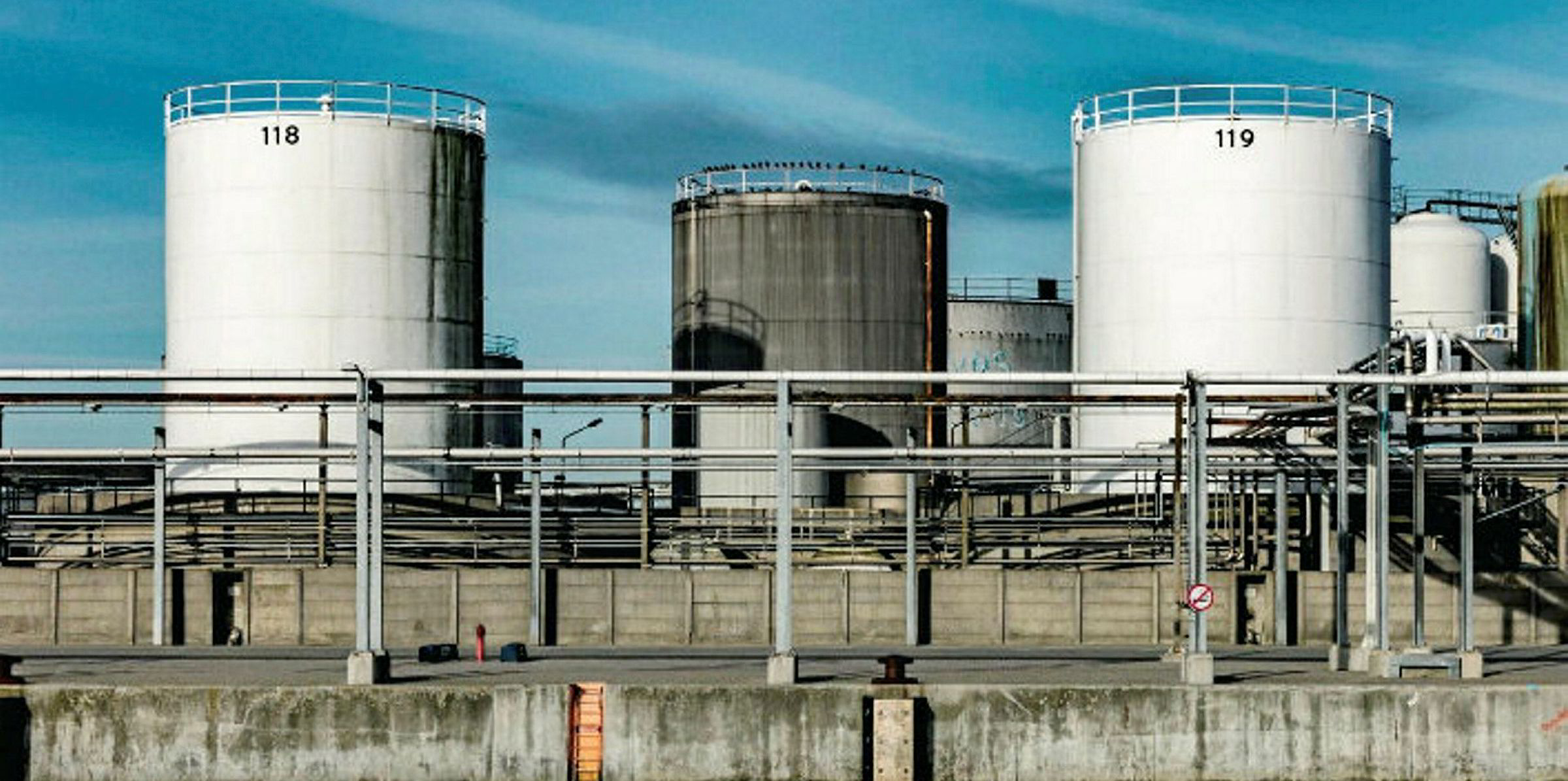Denmark’s Port Esbjerg is aiming to boost the volume of dry cargo it handles after its new terminal received its first cargo.
Late last week, Stema Shipping’s 11,546-dwt Tertnes (built 1985) discharged 10,200 tonnes of gravel shipped from Jelsa, Norway.
The new terminal, offering a combined capacity of about 17,000-cbm across its four holds, is intended for cargoes of sand, crushed stone, gravel and granite.
Port Esbjerg established the terminal just under a month ago with a view to generating more business.
“We’ve always had bulk at the port, but with the new bulk terminal, we’re expanding our offering by facilitating bulk goods handling in a structured way,” Port Esbjerg chief executive Dennis Jul Pedersen said.
“We’re confident this will attract more business to the port and delighted to see the Tertnes inaugurating our new facility, which is the first step to achieving this goal.”

Soren Stougaard, a shipbroker of Blue Water Shipping, which acted as the agent for the Tertnes, said: “The bulk terminal was the perfect place to unload the gravel, as the cargo consisted of four different fractions.”
Unique ship
This unique bulker has its own unloading jib, which is said to “considerably increase” the unloading capacity compared with unloading using a mobile jib crane.
Stougaard said he hoped that with the new terminal and its capacity to handle large bulk volumes, more companies will use the port of Esbjerg.
“I hope and believe that existing and new customers will use the new terminal, increasing the volumes of imports and exports alike,” he said.
“I am confident that we will achieve that because you can load and unload large volumes and store your goods for a prolonged period.
“Normally, you have to unload directly on the quay and then quickly remove the goods again.”
Port Esbjerg is better known for its activities in the growing offshore wind sector as well as Denmark’s hub for ro-ro traffic.
Between 2003 to 2014, the port invested about DKK 1bn ($160m) in new areas and port facilities to meet the demands from the offshore industry and pave the way for future growth.






